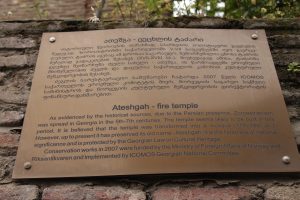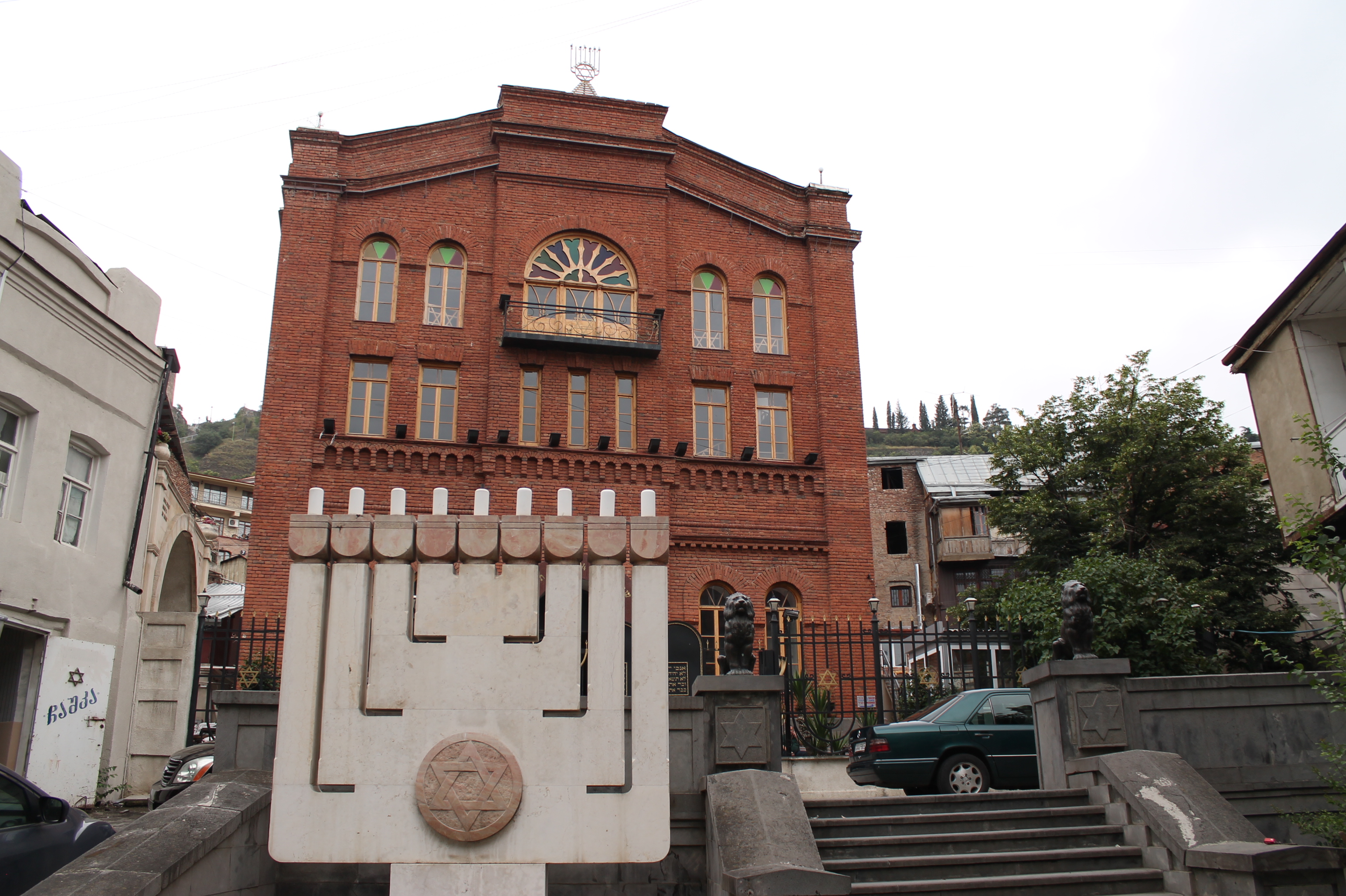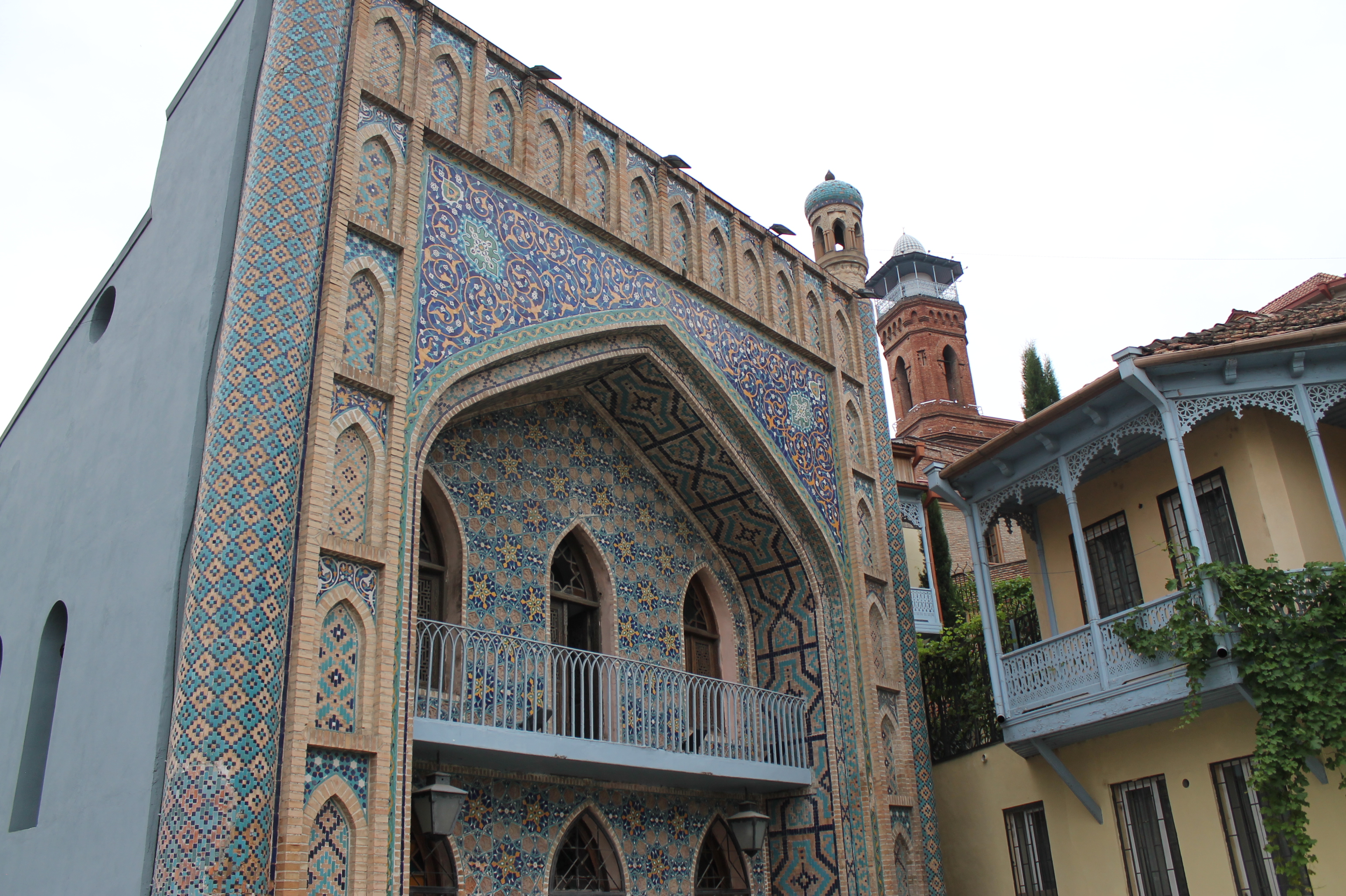Ajam Media Collective recently worked with THE STATE, a Dubai-based publishing practice, to make a ‘zine. We provided the words and art while they provided the design to make a wonderful collaborative document. Please also read our introduction. All photographs in this essay are by the author.
One of the most striking features of the old neighbourhood of Georgia’s capital, Tbilisi, is the density of different places of worship, including Georgian Orthodox Churches, Armenian Apostolic Churches, Jewish synagogues, Catholic cathedrals, a mosque, and the ruins of a Zoroastrian fire temple—all tightly packed into a relatively small area. Most of these buildings are several hundred years old.
At first glance, this scene may conjure an image of a period in the city’s 18th to early 20th century history for visitors that is often romanticized as one of cosmopolitan co-existence. Indeed, the image of 19th and early 20th century Tbilisi as a cosmopolitan “gate” where ethnic Georgians, Armenians, Kurds, Azeris, Persians, Russians and others crossed paths, lived side by side, and engaged in business and cultural exchanges with one another is a common depiction in fiction and nonfiction sources alike. The notion of a diverse and dynamic Georgian society, past and present, is one that the current Georgian government capitalizes on to boost tourism. Especially since the 2008 armed conflict with Russia over Abkhazia and South Ossetia reignited the fracture of that same celebrated diversity.

Over the past few years—particularly under the rule of former President Mikheil Saakashvili—Georgia experienced not only rapid modernization of infrastructure, but also a re-branding campaign aimed at drawing both foreign direct investment and tourists alike. The massive construction of modern glass and steel skyscrapers and flowy, rounded architecture of public buildings and infrastructure (such as the Bridge of Peace) have replaced the old rationalist Soviet architecture. These capitalist campaigns are meant to brand Georgia as an irrefutably “European” country while simultaneously maintaining an image of being a “gate” between “East” and “West.”

For example, the old and inactive Zoroastrian fire temple, “Ateshgah” was restored in 2007 even though there are no Zoroastrians left in Tbilisi; it now serves as a tourist attraction. These places of worship thus become more than religious sites. They are part of the infrastructure of the city’s public identity, not only for tourists but also for Georgia itself. The preservation and restoration of these religious buildings become implicated in complex and polemical questions of Georgian nationhood, citizenship, identity, and belonging. The production of a neoliberal notion of cosmopolitanism based on tolerance and celebration of different ethno-religious groups within national borders, enshrined in the preservation of religious buildings, is part and parcel of this re-branding campaign. The presentation of a public space that celebrates diversity does not however necessarily translate to lived reality where difference just is.
There is no doubt that the dominant religion in Georgia, Georgian Orthodoxy, is intimately bound with Georgian identity and the Georgian Orthodox Church (GOC) has been credited with helping preserve Georgian traditions through the Soviet era. Other religions and ethnic minorities, however, also have historical claims to Georgia and specifically Tbilisi. According to the last census data available online from 2002, there are 3,541 Jews in Georgia, the majority of whom live in Tbilisi and are served by two synagogues. The Jewish community has registered as a legal entity with the state, which then allowed it to repair the synagogues.

It should be noted that during the Soviet era many religious buildings were appropriated by the state, and with the exception of those belonging to the Government of Georgia, the other buildings are still under the possession of the Georgian state which the government then usually leases to congregations of different religions usually at a symbolic (inconsequential) price. An example of ethno-religious claims to these places of worship, is the dispute between the Armenian Apostolic Church (AAC) and the GOC regarding certain churches that they claim belonged to their congregation before having been taken over during the Soviet era (though it is worth noting that the GOC has a similar claim to several monasteries in Armenia). Sometimes these disputes result in clashes as was the case recently when a scuffle broke out outside of an Armenian church in Tbilisi, which some claimed was motivated by ethnic discrimination against Armenians.
Another recent example of ethno-religious strife concerns the Georgian Muslim population. The most recent controversy flared up regarding the construction of a mosque in the Black Sea port city of Batumi contracted out to the Turkish government. The GOC opposed the building of the mosque. Also, some non-Muslim locals held protests against what they saw as an act of fueling tensions between Christians and Muslims, and quite possibly Turkish intrusion and influence on Georgia’s Muslim population.

These tensions are particularly noteworthy as Batumi is being branded by the Georgian state as a “glitzy” resort town, full of opportunities for both tourists and investors. As the Georgian state attempts to distance itself from its Soviet past and “westernize,” the cityscape becomes both a symbolic and material ground upon which Georgia can build its national identity as a modern and cosmopolitan country where diversity becomes a commodity to be capitalized on and consumed.
For Georgia’s ethno-religious minorities, however, this brand-as-commodity does not always translate to the same level of access and protection by the state. Belonging as a Georgian means belonging to the public space. In addition to having a place to worship one’s religion, religious buildings are also a physical sign of one’s belonging and right to public life and more importantly, to the nation-state. The ability to restore and maintain religious buildings becomes implicated in each ethno-religious group’s claim to public life and recognized citizenship.
Marking one’s identity as “having always belonged,” as opposed to “newly arrived,” requires the presence and recognition of historical roots, often in the form of physical spaces. While neoliberal notions of diversity and cosmopolitanism drive Georgia’s re-branding campaign to serve capitalist interests, contestations over representation and recognition in the public sphere are what make up the cacophonous sounds of coexistence and conflict in contemporary Georgia.












2 comments
Very interesting article, but I have to point out that what’s been labelled as the mosque of Tbilisi is actually a public bath house – the mosque is on the street just behind, and in fact the minaret is visible in this photo, rising up between the baths and the balcony.